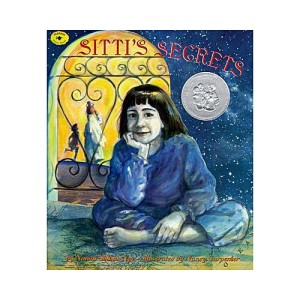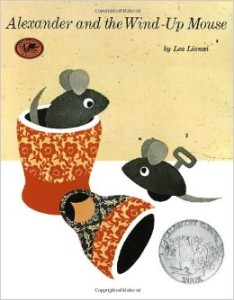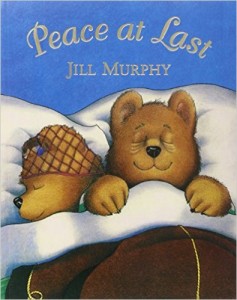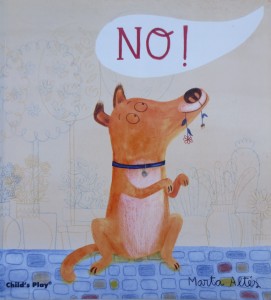Nye, Naomi Shihab (1994). Sitti’s Secrets (Illus. N. Carpenter). New York: Four Winds Press
Recommended by Bill Templer
Sitti’s Secrets is a poetic picturebook about a young Palestinian-American teenager’s first encounter with her ageing paternal grandmother ‘Sitti’ (sitti = grandma in Palestinian Arabic) living in a small Palestinian village on the West Bank, perhaps shortly before the June 1967 war. The brief narrative revolves around human connections that defy distance and time, a tale about ‘otherness’ in culture and language, and a young girl dreaming about and then discovering her grandmother’s very different distant world. The author is the highly acclaimed Palestinian-American lyric poet Naomi Shihab Nye, born in St. Louis in 1952. Naomi has authored numerous books, including a young-adult novel set in the West Bank in the 1970s (Habibi, 1997) and the recent teen novel, The Turtle of Oman.
In 14 painterly double-page spreads by illustrator Nancy Carpenter and simple yet often lyrical prose, Mona narrates her journey together with her Palestinian father to visit his mother. There, Mona becomes immersed in a Palestinian village pastoral, its quotidian vibrations, and the soft wonder of Sitti’s life and her ‘lemon tree that whispers secrets’. The book is highly autobiographical (Mona = Naomi), based on Naomi’s first visit to her grandmother in 1966. There is no mention of Israel. But after Mona’s return to the states, she writes a brief ‘letter to the President of the United States’ about her grandmother, and about peace, almost a prose poem, still sharply topical. [End of Page 88]
The picturebook is a sensitively told counter-text to xenophobia of any kind. The easy lexis and basic syntax render the tale suitable for learners at low intermediate level and beyond. It can be taught as a window onto Palestinians, a different deeply agrarian life and culture. Themes that can connect with students’ own lives and knowledge abound, including the riddles of a bicultural childhood.
| Bill Templer is a Chicago-born applied linguist with research interests in English as a lingua franca, critical and working-class pedagogy, and literature in the EFL classroom. He is active in GISIG in IATEFL, on the editorial board of the Journal for Critical Education Policy Studies, and long engaged with issues of social justice in Palestine/Israel and elsewhere. Bill has taught English and German at universities in 11 countries and is based as an independent researcher connected with BETA in eastern Bulgaria. |
Lionni, Leo (2013). Alexander and the Wind-up Mouse. London: Andersen Press
Recommended by Lorrain Sly
This popular story written and illustrated by Leo Lionni and originally published in 1969 is fortunately back now to enchant a whole new generation of readers.
Visually enhanced by his imaginative collage illustrations, in this tale Lionni explores the timeless theme of ‘grass growing greener on the opposite side of the fence’ by presenting Alexander, a real mouse living in a most unwelcoming home and his friendship with Willy, a mechanical mouse who dwells there too, but under very different conditions. Whilst [End of Page 89] Alexander puts up with broom chasing and mousetraps, Willy receives VIP treatment from Annie, who loves him dearly! It’s not surprising that as their friendship grows, so does Alexander’s desire to become a wind-up mouse just like Willy.
When all seems set for magical lizard to grant Alexander his wish, he disappointedly discovers Willy dumped in the trash under a pile of old toys Annie’s thrown out and replaced by new birthday gifts. Facing the shattered promises of lush lawn over the fence, a desperate Alexander has now to decide how to make best use of the lizard’s transformative powers…
With drama and suspense bursting at its seams, Lionni wraps up his story with a joyful ending, sure to captivate a primary audience, as I discovered when using this book with 10/11 year-olds, who became highly involved discussing all sorts of issues related to identity conflicts and wishing, on occasions, to be someone else. Kids keenly participated in a follow-up recycling campaign to collect old toys, condition them with Grannies’ help and send them off for Child’s Day to a far away school set in a disadvantaged area.
The sense of purpose the children experienced and their responsibility throughout was incredible. To the extent of writing up a catchy poem on recycling and performing a rap-dance in front of all their schoolmates, requesting everybody’s contribution to this campaign. After all their effort and enthusiasm, the project was crowned by success: a week before Child’s Day a truck-full of toys set off on its journey to meet their new caretakers over 1000 km away!
| Lorraine Sly is a freelance English teacher trainer and counselor living in Buenos Aires. Former lecturer in Methods at state Teacher-Training College “Lenguas Vivas”, Lorraine delivers workshops to language teachers throughout Argentina and participates in a Children’s Literature research group. In 2015 she attended an online Children’s Literature specialisation course with the Universitat Autónoma de Barcelona. Her current research interests include translation studies in children’s literature and picturebooks for language learning with all ages. Her website – www.timefortale.wordpress.com [End of Page 90] |
Murphy, Jill. (1980). Peace at Last. Oxford: Macmillan Children’s Books
Recommended by Teresa Fleta
Peace at Last is a delightful picturebook by Jill Murphy. The story deals humorously with one big issue in life: having trouble getting to sleep because of the environmental night sounds. The plot mirrors a simple traditional fairy tale structure in a familiar setting. At the beginning, the story presents a family of tired and sleepy bears at home, but the noises at night shatter Mr Bear’s sleep. He tries sleeping in different places: the sitting room, the kitchen, the garden and even in the car, but it is too noisy everywhere and he gets no sleep at all. When he finally climbs back into bed and all is quiet in the house, the alarm goes off. ‘Did you sleep well?’ asks Mrs Bear. ‘Not VERY well, dear’, answered Mr Bear.
This core text gives rise to prosodic features with a predictable, repetitive catchy text ‘Oh NO! I can’t stand THIS!’, which makes the narrative ideal for reciting during shared reading or during independent reading sessions. Jill Murphy links sounds and meaning underscoring the acoustic elements of language using onomatopoeia: ‘TICK-TOCK… went the living-room clock… TICK-TOCK, TICK-TOCK’. The memorable and charmingly detailed illustrations marry with the text. Most of the scenes are set at night and Jill Murphy uses the fuzziness in each scene cleverly by filling the darkness with subtle details like the clocks on the walls that show the passing of time.
Peace at Last is an ideal teaching resource for younger English learners to raise phonological awareness and to make the reading of sounds visible, as well as helping children learn to listen. By joining in with the repetitive refrain during rereading, children practice pronunciation, intonation, pitch and rhythm, which are the building blocks for both listening and speaking. [End of Page 91]
| Teresa Fleta (PhD) is an early years specialist, presently an honorary collaborator in the Faculty of Education at the Complutense University of Madrid and formerly at Alcalá de Henares University, where she taught on the MA for Teaching Young Learners. She has conducted research studies on child language acquisition of English in instructed bilingual settings. Her main interests are language acquisition and teaching pedagogy and she has published widely. |
Altés, Marta (2011). No! Swindon: Child’s Play
Recommended by Sandie Mourão
This is the first picturebook by a young picturebook creator, who studied illustration at the prestigious Anglia Ruskin University, Cambridge. She has since published many picturebooks, but this remains my firm favourite.
No! is the story of a dog (her dog), who does everything he can to help his family, at least he thinks he does. The words tell us the dog’s story and the illustrations show us the owners’ reactions. So when we read ‘I taste their food before they eat to make sure that it’s all right’, the illustrations show the dog stealing food from the table and there is a large speech bubble saying ‘No!’ coming from an invisible owner. The dog’s confidence, as he continues telling the reader what he does to help his owners, is ironically contrasted by what we see as ensuing chaos in the illustrations. The book’s title is No! for this dog is sure that’s his name! His dilemma culminates at the end of the book when the words say, ‘Why did they buy me a collar with the wrong name?’ and the illustrations show us the name Spike on his nametag. This really is a visual experience that helps [End of Page 92]
children understand the concept of seeing things from different perspectives, for the words and the illustrations do just that.
No! can be used with children from 8 to 10 years old. If introduced into a unit that focuses on pets, it provides them with language to talk about what their pets do. The children should be encouraged to look carefully at the pictures and the words and think about what each represents. This leads nicely into writing a short text in their pet’s voice, accompanied by their own illustrations showing their human point of view.
| Sandie Mourão (PhD) is an invited assistant professor at Nova University, Lisbon, an author, educational consultant and researcher. She specialises in early years language education and her research interests include early years language learning, picturebooks in ELT and classroom-based research. Sandie is co-editor of the CLELEjournal. She has a website – http://sandiemourao.eu/pages/ and a blog – http://picturebooksinelt.blogspot.pt/ [End of Page 93] |





